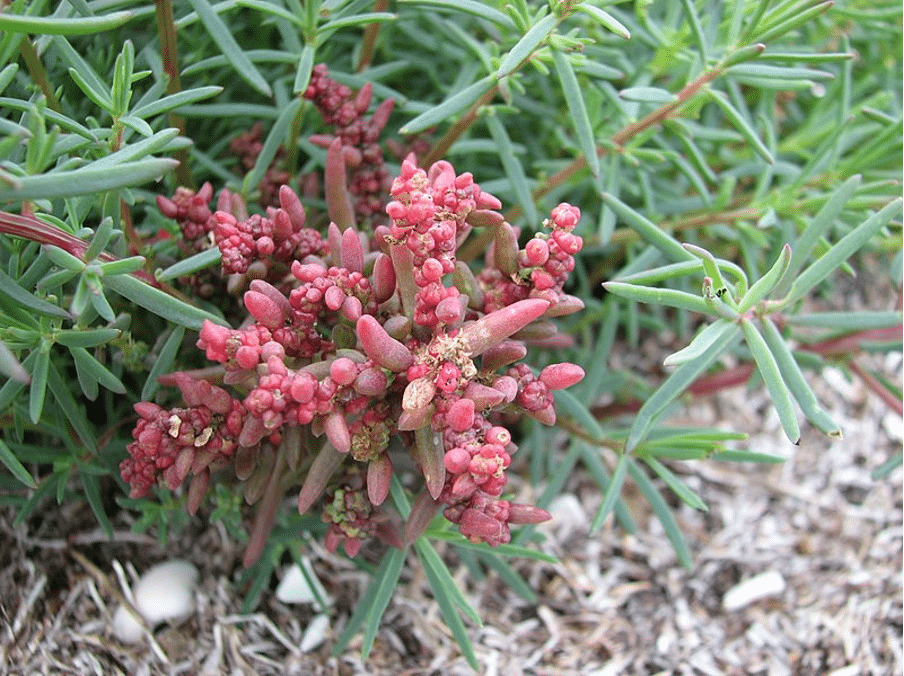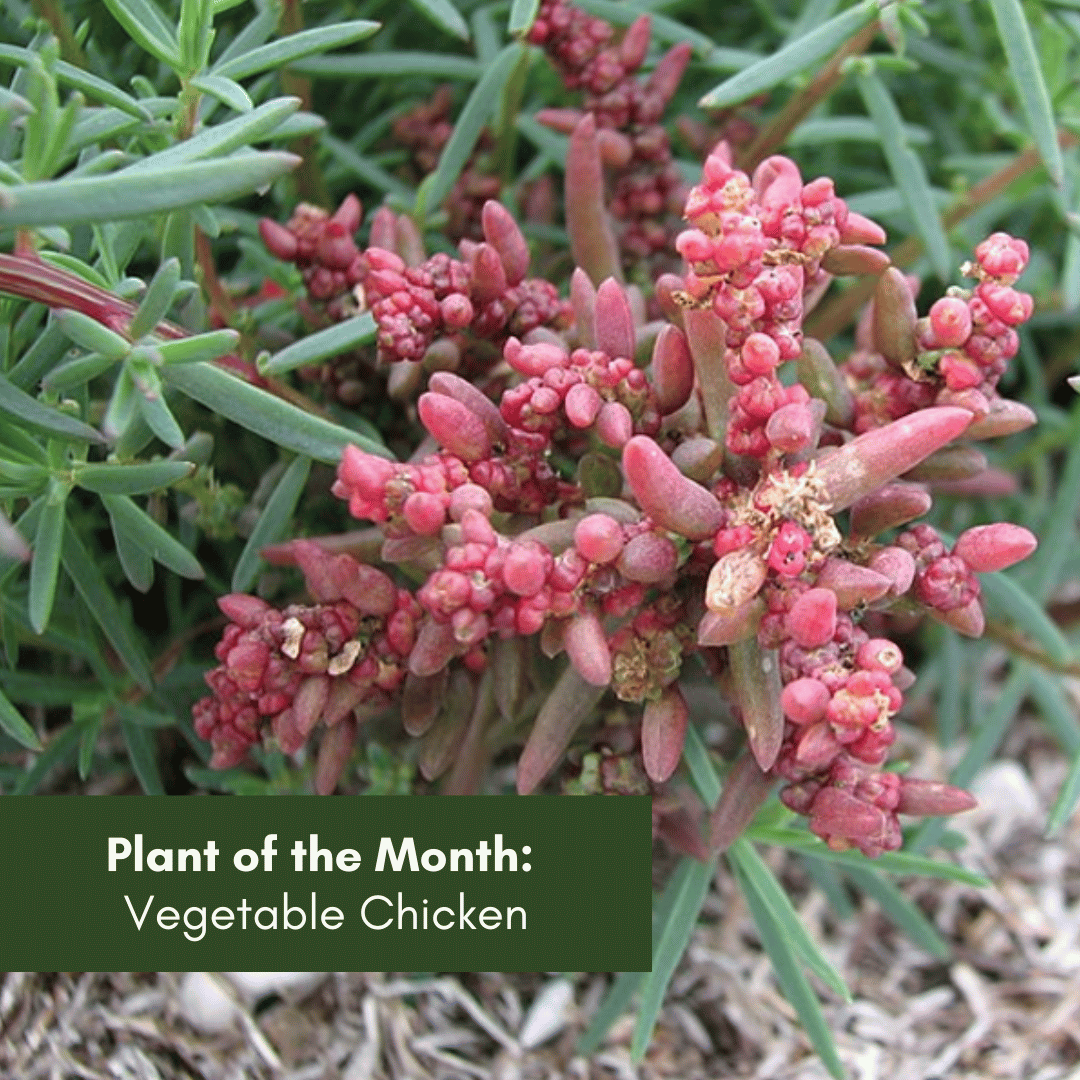Where there’s water there’s food, this also applies with salt water, saltmarshes generally having a few edible species either in them or nearby, generally growing in salt water are the halophytes, these plants suck up salt water and retain the salt in their leaves. Usually too salty to eat raw, the two common halophytes around the lower Hunter require a quick boil prior to eating.
Seablite, Suaeda australis, is a low growing succulent plant to about 30cm high, grey-green, leaves about 3 cm long, 2-3mm wide, round in cross section, generally on the margins of salt marsh the newer growth can be quickly boiled and eaten and tastes like a slightly salty snow pea.

By Melburnian – Self-photographed, CC BY 3.0, https://commons.wikimedia.org/w/index.php?curid=14844285

By Melburnian – Self-photographed, CC BY 3.0, https://commons.wikimedia.org/w/index.php?curid=4823502
Samphire, Chicken Claws, Sarcocornia quinqueflora is another halophyte found in saltmarsh occurring below the high tide mark, it forms a low mat with the stems growing to about 10cm high, the stems are jointed, hence another common name “Beaded Glasswort”, “Glasswort” coming from it’s use in glassmaking and “Chicken Claws” refers to how they look like chicken legs. Preparation is the same as the Seablite, a quick boil in water, the younger stems being preferable as they can get stringy and woody as they get old.
What’s in a name?
One of the tricks to identifying or at least remembering a plants name is to understand where that name came from, while some scientific names can seem pretty random a knowledge of what the names mean can help with identifying and remembering them. Many of the names have been drive from Greek or Latin and have often been “Latinised” (eg smithii)
In many cases the name will refer to something fairly obvious like a leaf feature, or flower colour, or shape of the plant, or even the habitat in which it grows. Some of the common prefixes and suffixes you’ll come across are:
|
English |
Latin |
Greek |
|
leaf |
folii- |
phyllo |
|
flower |
flori- |
antho-, -anthemon |
|
bark |
cortici- |
phloeo-, phloia- |
|
branch |
rami- |
clado-, rhadico-, spadico-, thallo- |
|
spine |
spino- |
acantho- |
|
white |
albi- |
argi-, argo-, leuco |
|
black |
nigri-, atro- |
celaeno, celaino, pelio, melancho, melano |
|
red |
rubri- |
erythro- |
|
green |
viridi- |
chloro- |
So, here’s some to test you, what do you think these refer to:
Eucalyptus melanophloia?
Acacia longifolia?
Bursaria spinosa?
Grevillea albiflora?

